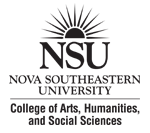Article Title
Exploring Life and Death at the Cellular Level: An Examination of How Our Cells Can Live Without Us
Document Type
Article
Abstract
During the academic year (2012–2013) students and faculty in the Farquhar College of Arts and Sciences focused on the annual theme of “Life and Death.” To this end, we have been focusing all aspects of academic growth around this theme. It has guided our coursework, study groups, invited lecture series, Faculty Lecture Series, and even our Commencement speaker’s address (Farquhar College of Arts and Sciences, 2013). In this paper the idea of life and death will be examined from a cellular and molecular level, and the idea of what happens to our biological pieces (cells, proteins, tissues, etc.) once they are separated from our bodies will be explored. This idea has become increasingly more intriguing as humanity has discovered ways of keeping these biological parts viable and useful while outside of the original body from which they were derived (Lodish et al., 2012). When thinking about how to approach the annual theme from a biological point of view, I began asking students and community members, “Do you really think that a person’s cells can live outside the body?” Most had not given the idea much thought and were astonished to learn that the answer was a resounding, “Yes!” Although it is not that likely, even your own cells could be living in a culture dish somewhere right now without your knowledge! (Eiseman and Haga, 1999). This paper explores the history of cell culture, including cell strains and lines, their purpose in basic research and medical advances, and some of the legal and ethical underpinnings surrounding their development and use.
Recommended Citation
Schmitt Lavin, Emily F.
(2013)
"Exploring Life and Death at the Cellular Level: An Examination of How Our Cells Can Live Without Us,"
Quadrivium: A Journal of Multidisciplinary Scholarship: Vol. 5:
Iss.
1, Article 7.
Available at:
https://nsuworks.nova.edu/quadrivium/vol5/iss1/7

Author Bio(s)
Emily Schmitt, Ph.D., associate professor and associate director of the Farquhar College of Arts and Sciences Division of Math, Science, and Technology, earned her Ph.D. in Biology from the University of Miami in 1997, and joined the Nova Southeastern University faculty in 2001. She teaches and guides biology majors throughout their careers at NSU. Her areas of research include gene expression in yeast exposed to toxins, innovations in science education, genetics and genealogy, fish identification, ecology and behavior, and coral reef ecology and conservation. She has been intrigued by the concept of cellular life after death for several years. Schmitt is recognized for her extensive research mentorship and support, which connects her students with national and international research communities and with the advanced research skills necessary for success in graduate and professional schools.